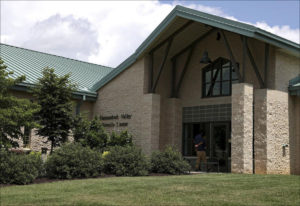In the fall of 2017, three migrant children detained by the federal Office of Refugee Resettlement (ORR) at the Shenandoah Valley Juvenile Center filed a class action lawsuit alleging abuse by guards. This June, amidst national media coverage of the separation of children from parents on the U.S. border, news media discovered the lawsuit and reported on the allegations.
As I summarized the charges in a blog post: “Allegedly, teenagers were restrained, handcuffed, and made to sit with bags over their heads. Some were stripped of their clothes. Some were locked in solitary confinement, some beaten, left with bruises and broken bones and kept shivering in concrete cells.” I added: “The claims, if true, are shocking and must be addressed immediately.”
Well, the Northam administration promptly looked into the issue and has published its report. The findings? As I should have surmised from the hysterical, almost apocalyptic nature of the immigrant-children coverage by the national media, the state Department of Juvenile Justice “found that there was no evidence of abuse or neglect.”
DJJ staff interviewed all of the federal residents of SVJC. The team was unable to substantiate the conditions described in the lawsuit concerning the operations of SVJC or the mistreatment of residents. After obtaining permission from ORR, the team returned on June 25 and reviewed case files, medical files, room confinement forms, and other documentation to assess compliance with regulations relating to the quality of care.
The immigrant children held at SVJC aren’t toddlers separated from their parents. They are unaccompanied minors under the age of 18 with no parent or legal guardian in the U.S. Many have suffered trauma; some belong to gangs such as the infamous MS-13. Many display behavioral issues presenting disciplinary challenges.
One technique used by SVJC is “room confinement” to “ensure the safety and security of residents, staff, and the facility.” The DJJ found no incidents where residents were confined longer than 24 hours. With the exception of one 23-hour incident, confinements typically lasted four hours.
SVJC staff also used, though rarely, a “restraint chair” for out-of-control residents “who cannot be safely restrained by less intrusive methods. While in the chair, a mesh spit guard can be placed on the resident’s head to prevent spitting or biting.”
In sum, the center faced difficult conditions. “Young people who have been frequently exposed to high levels of trauma, who are separated from their families, and who confront numerous language and cultural barriers” comprise a “uniquely challenging group,” the DJJ report says. The center should provide staff with professional development “in the areas of positive youth development, cognitive behavioral interventions and trauma informed care” and should increase “understanding and sensitivity toward the unique cultural backgrounds of the youth in the federal program.” DJJ also recommended more training in the use of physical and mechanical restraints, and in the effective use of de-escalation techniques.
Bacon’s bottom line: In other words, while the Shenandoah Valley Juvenile Center could benefit from some tweaks, investigators found no real problem there. What this story highlights — although you’ll never see a mainstream media outlet framing the issue this way — is an endemic feature of illegal immigration. Many children are unaccompanied by parents or relatives. Many suffered trauma — not at the hands of Americans but of their fellow countrymen (or perhaps Mexicans, which many had to pass through to get to the U.S.). And many pose special behavioral problems requiring their confinement and costing U.S. taxpayers.
The national media is largely uninterested in such issues, of course, so I anticipate zero follow-up. If U.S. immigration policy cannot be blamed, there’s nothing worth writing about.
Here’s what I would like to know. Who were the children who made the allegations and had a suit filed in their name? More importantly, who were the attorneys filing the suit on their behalf? How did those attorneys gain access to the children? Are they just random lawyers off the streets of Staunton, or are they part of a nonprofit organization? If they were part of a nonprofit, what is that organization’s aims and who is funding it? Could there have been political motivations behind the lawsuits? None of that information, as I recall, was reported by the media. What a surprise.
Update: The state report has come under heavy criticism by the people who filed the original lawsuit, including the Washington, D.C., law firm Wiley Rein and the Washington Lawyers Committee for Civil Rights and Urban Affairs, as well as the Henrico-based disAbility Law Center of Virginia. The Virginia Mercury has the story here. Unlike state investigators, the disAbility Law Center says it had unaccompanied access to the residents.



